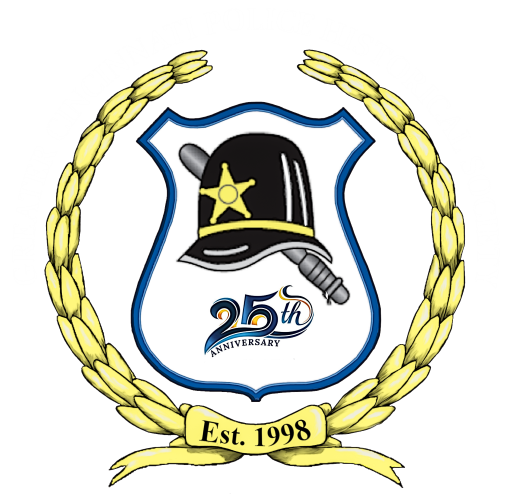Age: 36
OFFICER
Joe was born February 10, 1816 to Mr. and Mrs. Joseph Stowder of Campbell County. We know almost nothing of Joe Stoddard’s personal life or history before, or even when, he was first elected to the position of Watchman. However, by 1852, Watchman Stoddard was a policeman of some prominence working in the 3rd Ward; the worst ward in Cincinnati and headquarters of its worst gangs. The “Blue Anchor” and “Goose” saloons were their hangouts. Judge Pruden was intent on breaking up the gangs and had Watchman Stoddard detailed to the task.
INCIDENT
During the early morning hours of September 10, 1852, Watchman Stoddard entered the Blue Anchor Saloon on Front Street near Washington Street. A man making a racket inside spotted him and ran from the establishment through a side door. Watchman Stoddard chased him to a patch of bushes but lost him.
Watchman Stoddard came across Lieutenant Hazen, explained what had happened, told the lieutenant of his belief that the suspect was a counterfeiter, and asked to be relieved of standing roll call at the end of the shift so that he might search for whatever it was that the suspect deposited in the bushes. He would then go home and bring into the stationhouse the next night whatever he found. Lieutenant Hazen agreed.
DEATH
A couple of hours later, about 5 a.m., a workman reported to Lieutenant Hazen that a watchman was found stabbed to death on Parsons and Martin Streets, which was close to Watchman Stoddard’s home on Front Street. Lieutenant Hazen responded and found Watchman Stoddard stabbed in the abdomen and lying in a gutter. He had discharged his revolver once but there was no evidence that his shot took effect on anyone.
We believe he was predeceased by a an almost two-years-old son, James Albert Stoddard. Watchman Stoddard was survived by a wife, Catherine Stoddard, and three children, Anne E. Stoddard (15), John W. Stoddard (13), and Joseph Henry “Harry” Stoddard (8). His funeral was one of the finest and largest in the city to that time. More than 800 police and firemen, both of which organizations he belonged to, escorted his remains. He was buried in Wesleyan Cemetery. His family was left destitute without him.
INVESTIGATION
Initially, William F. Chaffee (or Schee) and the barkeepers of the Blue Anchor, Collins and Eastman, were arrested on suspicion. By September 13, 1852, police had determined that Watchman Stoddard was actively investigating Chaffee for counterfeiting and that he and others were due to meet Chaffee on the next morning. On September 15, 1852, his trial before Mayor Mark Tayler was continued until the next day. The Mayor acquitted them without an indictment due to a lack of evidence against them.
On September 24th, the Mayor published an ad for a $300 reward for the arrest and conviction of the perpetrator.
Eventually, detectives learned that the man that ran from the bar was Louis (or Lewis) Dollman, a notorious counterfeiter. Later it was determined that Dollman was wanted also for a train robbery in the Village of Carthage. He was found in St. Louis, Missouri. When officers went to arrest him, he put up a fight and was killed in the engagement. They recovered the loot from the train robbery.
We found no evidence of anyone ever being tried for Watchman Stoddard’s death.
EPILOGUE
Over the years, the Cincinnati Police Department had two people with similar names on their official list of officers killed in the line of duty – “John Strawther” reportedly killed in 1846 and “Joseph Stowder” in 1852. With intensive research, the Greater Cincinnati Police Historical Society has determined there was only one – Joseph Stoddard or Stowder.
Newspaper accounts of the day additionally gave the watchman’s name as “Strowder” and “Strawder.” Even city directories list him as “Stoddard,” “Stowder,” “Stoddart,” “Stowdard,” “Stotter,” and “Stowdar.” We may never know the actual spelling but will continue to try to ascertain it.
If you know of any information, artifacts, archives, or images regarding this officer or incident, please contact the Greater Cincinnati Police Museum at Memorial@Police-Museum.org.
© This narrative was further researched and revised on July 5, 2019 by Cincinnati Police Lieutenant Stephen R. Kramer (Retired), Greater Cincinnati Police Historical Society Vice President, with significant research by Cincinnati Homicide Detective Edward W. Zieverink III (Retired), Greater Cincinnati Police Museum Historian, Joyce Meyer, Price Hill Historical Society Historian, and Donna M. St. Felix, Greater Cincinnati Police Museum Researcher.


